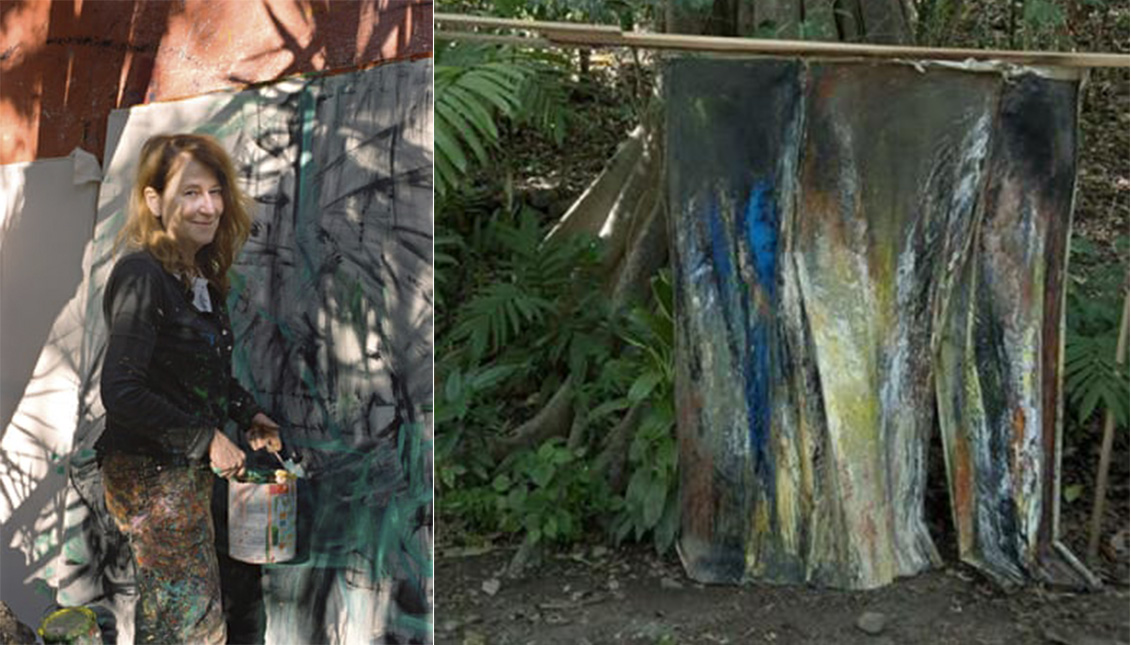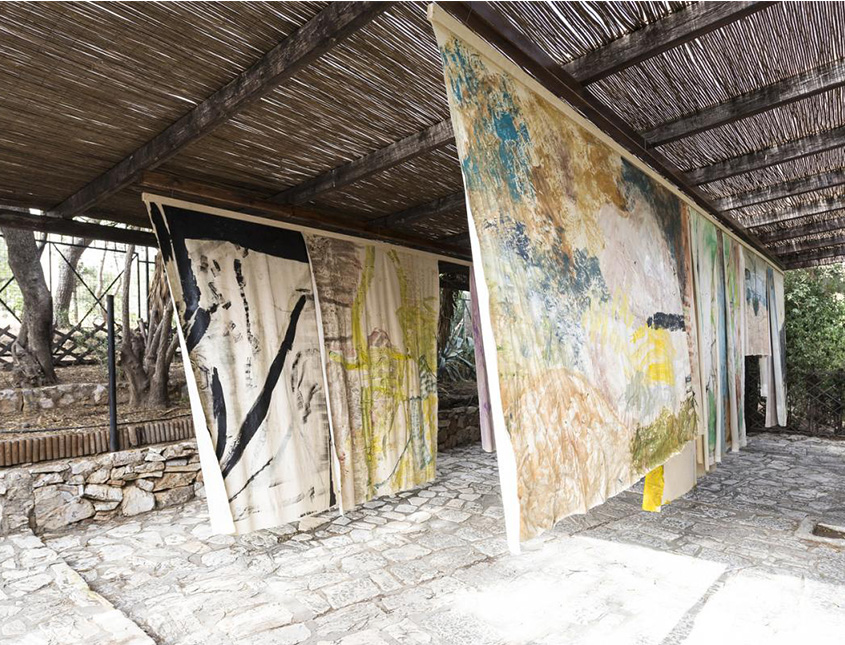
Vivian Suter, a "Robinson" of eco-art in the Guatemalan jungle
She was forgotten for three decades until a curator found her deep in Guatemala. Vivian Suter, lost to the world, had made nature part of her work.
Talking about the Swiss-Argentine artist Vivian Suter (70) is like asking a volcano what art is and reading the answer in the dried lava. An enigma for many, she managed to triumph in the art world at the age of 18 in Basel, but an existential crisis - one divorce and the weariness she felt with Switzerland - led her in 1981 to a wild journey through Central America that culminated on the shores of Lake Atitlán in Guatemala. She fell in love with that place of fierce nature, even more so because there was a war going on, and her trail was lost for 30 years.
She remarried. She had a son, Pancho (34). Her mother, the also artist Elisabeth Wild, who died recently, had moved to live with her near the slope of a volcano, in a bungalow on the shore of the same lake that has become the perfect partner for her art.
Three decades of works are stored in her back garden; when it rains the mud covers them and does its bit; her three mastiffs also collaborate, trampling the canvases and leaving their traces. "They're part of the job now," she tells The Guardian. "I don't think anyone will mind."

In less than a week these canvases will be exhibited at the Camden Arts Centre (London) as a tribute to one of their dogs. The exhibition is called "Tintin's Sofa" and will later also visit Berlin and Madrid. Something that hadn't happened in all those years when she lived almost without money, using fishtails, big boats of paint for walls and cheap fabrics to keep working.
RELATED CONTENT
Vivian Suter had no choice but to work with nature and not against it.
She even came close to losing the house, if it wasn't for a curator who was determined to find her in connection with the work she had done as recently as 1981. When he found her, he discovered that Vivian Suter was the artist who best expresses the great ecological crisis that threatens our times. A pioneer of eco-art. A pioneer of interspecies art as well –if such a term even exists.
Vivian's mother, Elisabeth Wild, didn't stop creating at 98. Her art was the opposite of her daughter's: methodical, geometric, always signed and dated. On the other hand, Suter is a free spirit, her brushstrokes are frenetic and she never signs her works. The rain, the hurricane wind that in 2005 covered all his works exposed in the garden with mud, already takes care of that. Although at first, she thought it was a catastrophe, Vivian ended up admitting that if she wanted to live and paint in the depths of the forest, she had no choice but to work with nature and not against it.

"Then I started leaving them outside in the rain to splash around. It was a turning point that transformed everything. It made everything I do become a work of art, and that's how I see it now, not as individual pieces but as a whole," concludes this Robinson who has made the world her canvas.
Until next March, part of her work is also in the "En Plein Air" of the High Line, New York.











LEAVE A COMMENT: